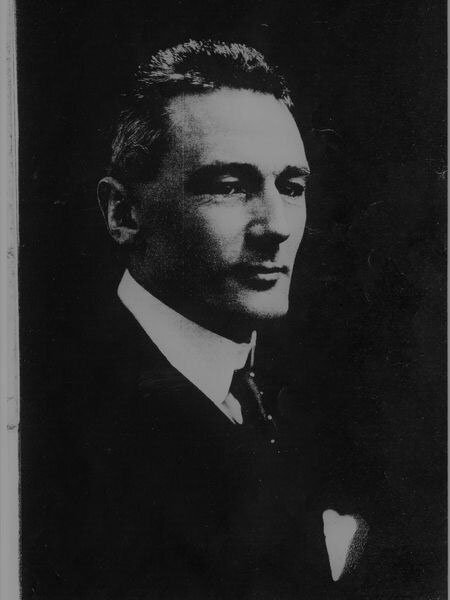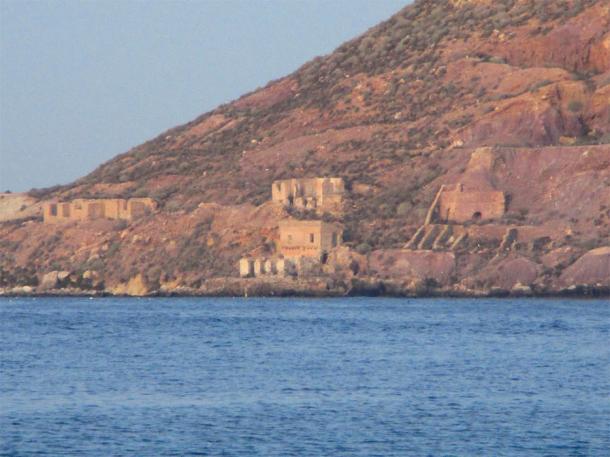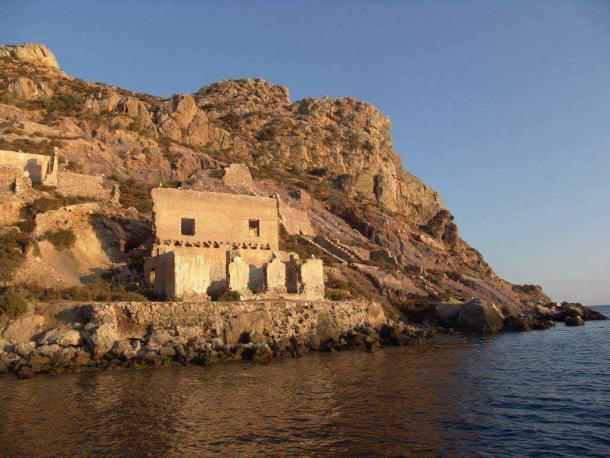Spanish researchers excavating Roman ruins on the tiny islet of Fraile (Isla del Fraile) now have a set of new targets: artifacts of espionage. A recently discovered WWI diary reveals the Spanish island was owned by an eccentric British spy, and the archaeologists will now be looking for signs of an undercover “British spy ring.”
The hitherto unknown story of the aristocratic British spy, Hugh Pakenham Borthwick, has been revealed in a WWI diary telling how the mystery businessman spied on the Spanish from the islet of Fraile. The new research surrounding the secret diary has now confirmed decades of suspicions about the activities of the eccentric spy while he lived on the island off the southeastern coast of Spain. And it is now known for a fact that he worked for British intelligence before and during World War I.

The British spy Hugh Pakenham Borthwick photographed in 1911 about seven years after he suddenly bought the Island of Isla del Fraile in southeastern Spain. ( El Pais English version )
The Secret Diary Of The Eccentric British Spy
Born in 1877, Hugh Pakenham Borthwick was a mysterious British aristocrat who passed himself off as a businessman. In 1904 he invested in a local bank on the islet of Fraile with the cover of making concrete. However, as soon as he arrived conspiracy theories emerged in communities around the island about his real reason for being there. And in this instance, the conspiracies were warranted, for Borthwick was a top level undercover British intelligence agent, a bona fide spy.
Borthwick used his islet off the coast of Spain to spy on that country’s marine activities in what The Times describe as “a little-known episode of the First World War .” Jacqueline Sorel, an Anglo-Dutch author who is writing a book about Borthwick’s life, says Borthwick came under the command of Lieutenant Colonel Charles Thoroton, the Gibraltar-based chief of British naval intelligence for the region. His task was to gather information pertaining to the movements of German submarines, and to identify secret fuel depots.
Sorel told The Times that the diary was written by another member of Borthwick’s “British spy ring,” a gentleman by the name of George Lee Boag, who was the British manager of the Great South of Spain Railway. The diary is currently owned by Alison Matheson, Boag’s great-niece, and it refers to Borthwick’s control of covert operations in the Almeria province . Furthermore, an entry made in 1916 says Borthwick was called on to discuss “information re submarines and measures for discovering depots of fuel etc.”

The remaining buildings on the tiny Isla del Fraile off the coast of southeastern Spain, which was used by the WWI British spy ring. (Mabelcalabuig / CC BY-SA 3.0 ES )
Digging Into The International British Spy Ring
An Independent article says Borthwick’s house on the island of Fraile is built upon ancient Roman ruins, and that archaeologists at the site will now be keeping an eye out for WWI espionage devices. The diary details how Boag handed over his responsibilities to Borthwick after his cover was compromised, and the crew of a secret service patrol boat, under Boag’s command, “was arrested on espionage charges.” The entry reads:
“Our efforts to prevent submarines getting supplies here seem to have been fairly successful so far, but it is a disheartening business.”
The diary also reveals other actors that assisted Boag and Borthwick: Walter E. Dixon, a Cambridge pharmacologist, and A.E.W. Mason, the author of the famous 1902 adventure novel, “The Four Feathers.”
Borthwick was no sleeper spy, but he was a full-on super spy. Writer Sorel says he left Spain in 1923 and later inherited the 7,000-acre Southwick estate in Hampshire, England as well as other estates in Scotland and Devon. The “eccentric businessman” went on to spy on Germany in the 1930s before his death in 1950. In the last years of his “career” he famously discovered a lost Velázquez portrait of Archbishop Fernando de Valdés, a masterpiece which is now exhibited in the National Portrait Gallery .

These Roman ruins on the Island of Fraile are likely the ones that were below Hugh Pakenham Borthwick’s home on the island during WWI. ( Barco Don Pancho, Boat Tour Agency )
Isla Del Fraile: Also, Strategically Perfect For Roman Spies
The Independent says Hugh Pakenham Borthwick will be remembered by his Spanish servants “as a debonair dog-loving squire who slept with a revolver under his pillow.” Now, with the information flowing from the new diary, it is no longer “rumored” locally, but a fact that from the moment Borthwick bought the islet of Fraile in 1904 he set about administering a secret network of British agents.
Networking along the Spanish coast, the British spies aimed to block German submarine attacks on British ships navigating the dangerous waters of the western Mediterranean Sea at the beginning of WWI.
And all these covert activities were conducted from Borthwick’s island home, which stands on the ruins of an ancient Roman site. Ironically, 2000 years earlier, this location was also occupied by military officers from a foreign land that were spying on the Spanish coastline.
Top image: British spy Hugh Pakenham Borthwick used the islet of Isla del Fraile to spy on Spain during WWI. Source: Mabelcalabuig / CC BY-SA 3.0 ES
By Ashley Cowie
 RSS Feed
RSS Feed















 January 20th, 2021
January 20th, 2021  Awake Goy
Awake Goy  Posted in
Posted in  Tags:
Tags: 













